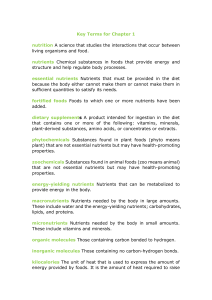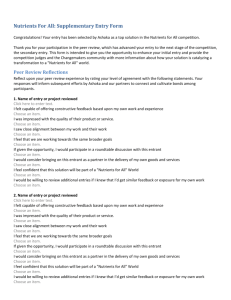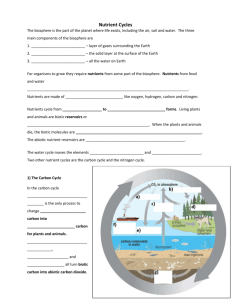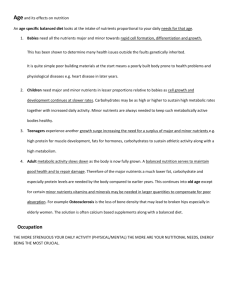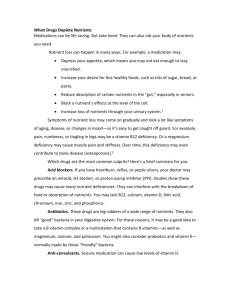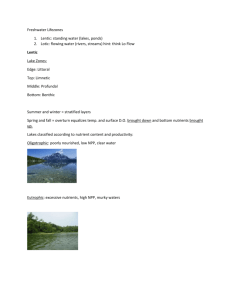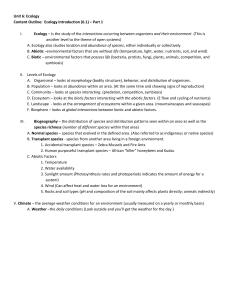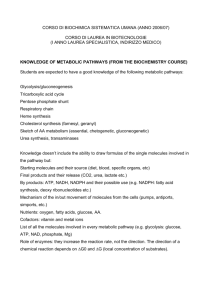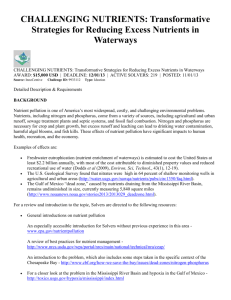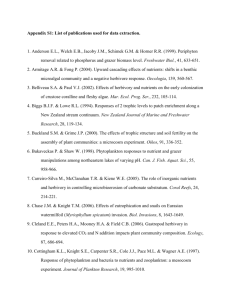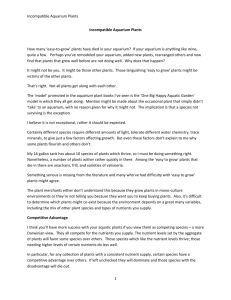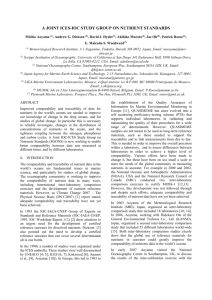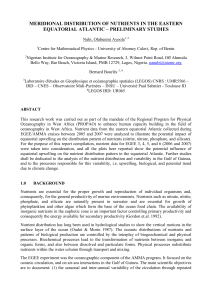Nutrient cycles answer key
advertisement
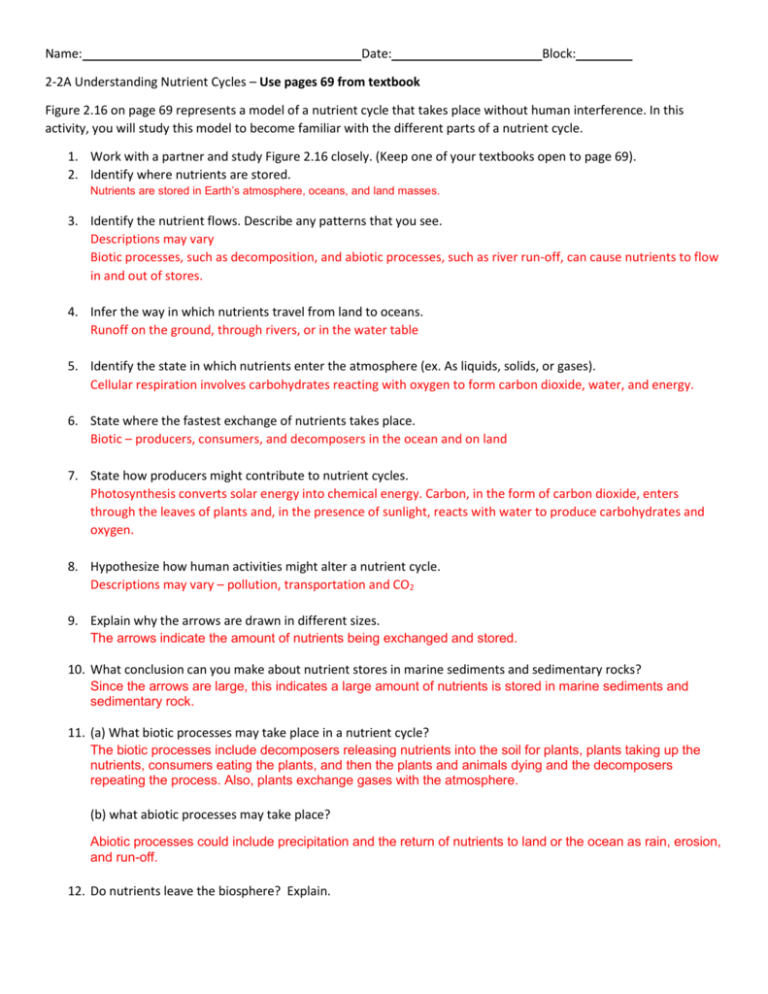
Name: Date: Block: 2-2A Understanding Nutrient Cycles – Use pages 69 from textbook Figure 2.16 on page 69 represents a model of a nutrient cycle that takes place without human interference. In this activity, you will study this model to become familiar with the different parts of a nutrient cycle. 1. Work with a partner and study Figure 2.16 closely. (Keep one of your textbooks open to page 69). 2. Identify where nutrients are stored. Nutrients are stored in Earth’s atmosphere, oceans, and land masses. 3. Identify the nutrient flows. Describe any patterns that you see. Descriptions may vary Biotic processes, such as decomposition, and abiotic processes, such as river run-off, can cause nutrients to flow in and out of stores. 4. Infer the way in which nutrients travel from land to oceans. Runoff on the ground, through rivers, or in the water table 5. Identify the state in which nutrients enter the atmosphere (ex. As liquids, solids, or gases). Cellular respiration involves carbohydrates reacting with oxygen to form carbon dioxide, water, and energy. 6. State where the fastest exchange of nutrients takes place. Biotic – producers, consumers, and decomposers in the ocean and on land 7. State how producers might contribute to nutrient cycles. Photosynthesis converts solar energy into chemical energy. Carbon, in the form of carbon dioxide, enters through the leaves of plants and, in the presence of sunlight, reacts with water to produce carbohydrates and oxygen. 8. Hypothesize how human activities might alter a nutrient cycle. Descriptions may vary – pollution, transportation and CO2 9. Explain why the arrows are drawn in different sizes. The arrows indicate the amount of nutrients being exchanged and stored. 10. What conclusion can you make about nutrient stores in marine sediments and sedimentary rocks? Since the arrows are large, this indicates a large amount of nutrients is stored in marine sediments and sedimentary rock. 11. (a) What biotic processes may take place in a nutrient cycle? The biotic processes include decomposers releasing nutrients into the soil for plants, plants taking up the nutrients, consumers eating the plants, and then the plants and animals dying and the decomposers repeating the process. Also, plants exchange gases with the atmosphere. (b) what abiotic processes may take place? Abiotic processes could include precipitation and the return of nutrients to land or the ocean as rain, erosion, and run-off. 12. Do nutrients leave the biosphere? Explain. Nutrients never leave the biosphere. They may change form. For example, carbon dioxide may become part of a starch molecule in a plant, and then after it is eaten by an animal the carbon may end up in a skin cell of the animal. When the animal dies, decomposers recycle the carbon and release carbon dioxide into the atmosphere. Elements of carbon, nitrogen, and phosphorus remain in the biosphere.


